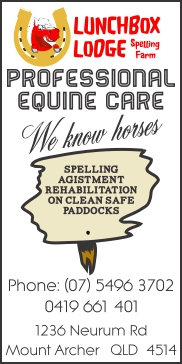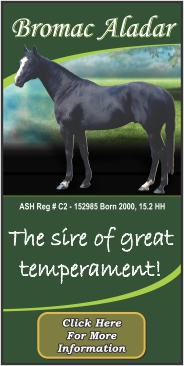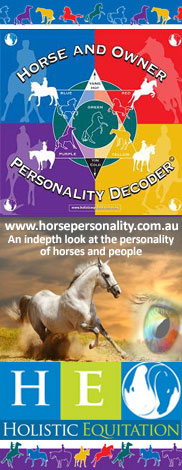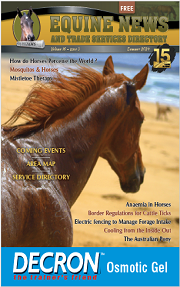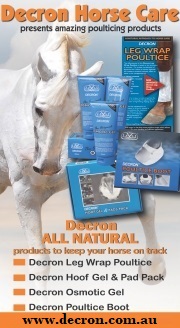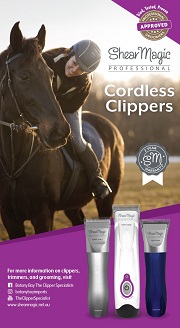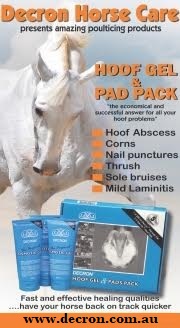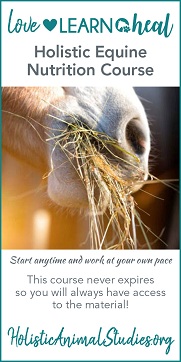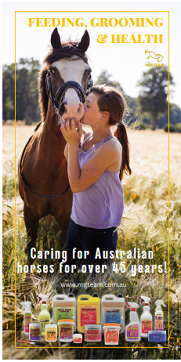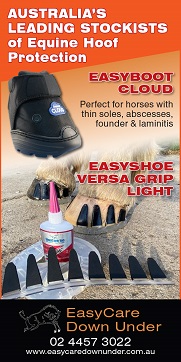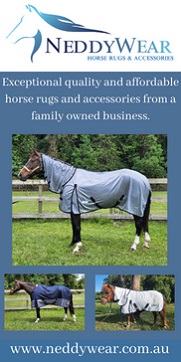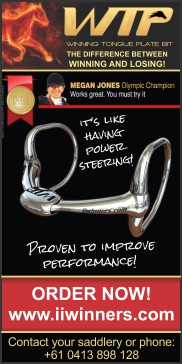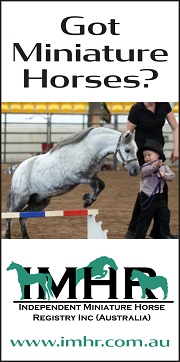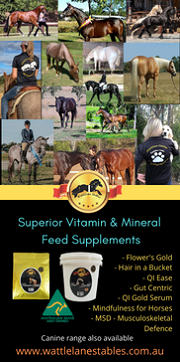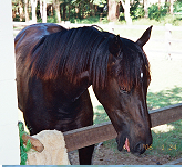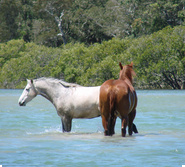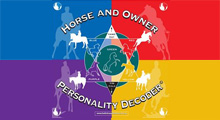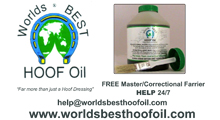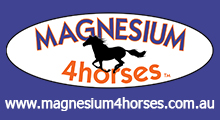For the sake of readability, girths will be mentioned throughout this article, but please take this to refer to cinches as well.
One of the most recognisable signs of discomfort in a horse is ‘girthiness’: a negative reaction to tightening of the girth when being saddled. Who hasn’t seen reactions such as twitching skin, side-stepping, flattened ears, rolling eye, turning and snapping or even kicking? Sometimes it may be as slight as a change of expression. Unfortunately, many people tend to think that the horse is just grumpy or sensitive-skinned, while some people blame the handling of the last owner or the racing establishment the horse came from.
Thankfully, awareness of the reasons why horses experience such intense discomfort and the ways in which this can be remedied is growing. This is due to independent research by veterinary practitioners, progressive developments in saddle fitting, and the increase in bodywork consultations for ‘regular’ riding horses (as opposed for select performance horses). So, how can the owner of the ‘girthy’ horse go about identifying the cause?
If your horse expands his ribcage to resist the girth, then you have a girthing issue, regardless of whether you notice signs of pain or not. It may be a habit learned long ago, retained due to the memory of pain, so experiment with desensitisation to see if that makes a difference. Break down the girthing process into steps. Do the buckles up one hole at a time (it’s kinder to do this anyway) and reward good reactions – or lack of negative ones – with treats. If there’s an improvement and it lasts, you may be looking at memory of pain. If not, then you need to make sure there’s not something causing discomfort now.
First, check your horse’s girth area with your fingertips. Twitching skin and muscles in the ‘armpit’ and/or the area behind the elbow and up in the direction of the base of the withers indicate girth pain. Dips, dents, bumps and hot spots mean you’re looking at tissue trauma, recent or old, so you need to get veterinary, veterinary chiropractor or bodyworker assistance, as it’s still bothering your horse.
If there’s no physical problem you can see, start thinking about saddlery. How does the horse react as you approach with the saddle and when it’s placed on his back? If there’s a negative reaction before you go anywhere near the girth, then the issue may be with the saddle creating pressure points that are then intensified as you do up the girth. The horse understandably reacts to this pain and will continue to do so as you mount up, possibly moving around until the back numbs. In this case, a review of your saddle’s fit for the horse is needed.
If he’s quite happy to accept the saddle with a happy eye, but reacts poorly when you start to girth up, then the problem may be the girth itself. Check: are you doing up the girth too tight? It needs to be tight enough to secure the saddle, but not so that it restricts ribcage movement. Don’t keep tightening it just because you can! Your next option is to try a different, kinder girth to see if it helps. Have a think about a wider width, a softer material, or one with elastic at both ends rather than one end. (Note: the elastic is to allow greater freedom of the ribcage in movement, rather than to help with over-tightening!). Look out for buckles digging into flesh, too.
If this doesn’t make a difference, the next step is to learn whether a less obvious physical problem is the cause. You may need to engage professional help to find out what is amiss. Broken and cracked ribs are not uncommon in horses, yet often go undiagnosed, leading to considerable pain and a lot of distress with girth tightening. Ex-racehorses are especially prone to this condition, as their working life has so many opportunities for sideways collisions, but any horse can take a kick in the herd or run into a post.
It’s more common for there to be a basic asymmetry in your horse’s shoulders or saddle area due to postural issues, which then manifests as girth pain on one side. This may arise from a problem in the thoracic spine or, indeed, elsewhere along the spine that is causing postural issues. Rotation in any vertebrae can cause shoulder and rib cage asymmetry, leading to girth pain on the wide side.
[see black horse picture]
A common problem that mostly escapes unnoticed is rotation of the upper thoracic spine. Its lack of visibility is due to the location between the shoulder blades. Often, when your horse has one shoulder that’s much wider than the other, the misaligned vertebrae are pushing the upper thoracic ribs further to one side, and consequently the shoulder blade. A fall backwards onto the withers can have this affect, or a heavy sideways fall onto the forequarters. Ongoing postural problems after injury elsewhere in the body can also yield this outcome.
[see bay horse picture]
Australian Veterinary Chiropractor, Ian Bidstrup, takes this further with his research into Girth Pain Syndrome. After studying over thousands of cases of girth reactivity, he has concluded that spinal dysfunction between the shoulder blades is the source of much girth pain. He has concluded that a huge number of instances relate directly to birth trauma, when the highest spinal processes of the foal’s withers are compressed downwards and rotated during passage through the birth canal. This is especially common amongst assisted births, where the mare is not yet fully dilated. He has found many instances in the thoroughbred industry.
The longer term outcome for the affected foal is ‘paraesthesia’ (nerve-related pain), due to irritation of the nerves passing via the affected thoracic vertebrae. This includes those enervating the girth area in the horse. Come the day when the horse is saddled and girthed, it experiences “pain, itching, burning and crawling sensations of the skin”. Sometimes, horses will have a low grade, tolerable level of pain which suddenly increases with an incorrect saddle, bad girth choice, injury or training injury makes it worse. This accounts for the apparent overnight appearance of girth pain in some horses.
Syndromic horses also have a displaced shoulder blade on one side, leading to further saddle and physical problems, not to mention an upright hoof on the affected side. Typically, these horses display pain reactions and muscular stress around the withers, the lower neck, triceps and pectorals as well as the girth area behind the elbow and scapula.
[see foal birth diagram]
Across the Pacific, American Veterinary Chiropractor, Lauren Derock, points to incorrect posture, ie, lack of carriage when ridden, as a source of girth problems, as well as many other issues. An inverted posture, with a hollow back and ‘upside-down’ neck, results in pressure on the upper thoracic vertebrae, also leading to pain around the upper chest, girth area, and base of neck. These horses usually have more extensive back problems too. In this case, you are looking at a training problem, with a need for bodywork too.
Dr Derock also indicates that hoofcare is a contributory factor to these problems. Certainly, any horse with hoof imbalances and, particularly, heel pain, will adopt an altered posture through the forelimbs and shoulders. This leads to additional stress throughout the entire shoulder and neck muscle group, with muscles already in painful spasm being further pressured by a tight girth.
Not yet mentioned are internal issues. Horses with gastric ulcers due to over-acidity are unlikely to enjoy being girthed. You can also consider hindgut acidosis – the large colon extends well forward beneath the stomach into the girth area – as a possible cause. Nutrition can also be an issue – vet and author Renee Tucker reports clinical cases where lysine and zinc shortage led to girth pain.
Clearly, many of these issues cross over and interrelate to the point where ‘chicken and egg’ situations are common. Some horses will have one or several of the mentioned issues occurring at the same time. Ultimately, everything you do to make your horse more comfortable is going to benefit both of you, so it’s worth taking some time to consider what’s causing the reactions.









